Do you remember the Trail of Tears?
Sadly, the only thing I could tell you was it had to do with Native American Indians being forced to move out West. It seems my history classes focused more on the Revolutionary War, the War of 1812 and the Civil War than anything else.
Did you also know that the Cherokee Indians tried to get along with the white man by adopting many of their styles in clothing? They adopted a government similar to ours with three branches? They also had a written language and a weekly newspaper. In fact, the Cherokee Indians were about 90% literate.
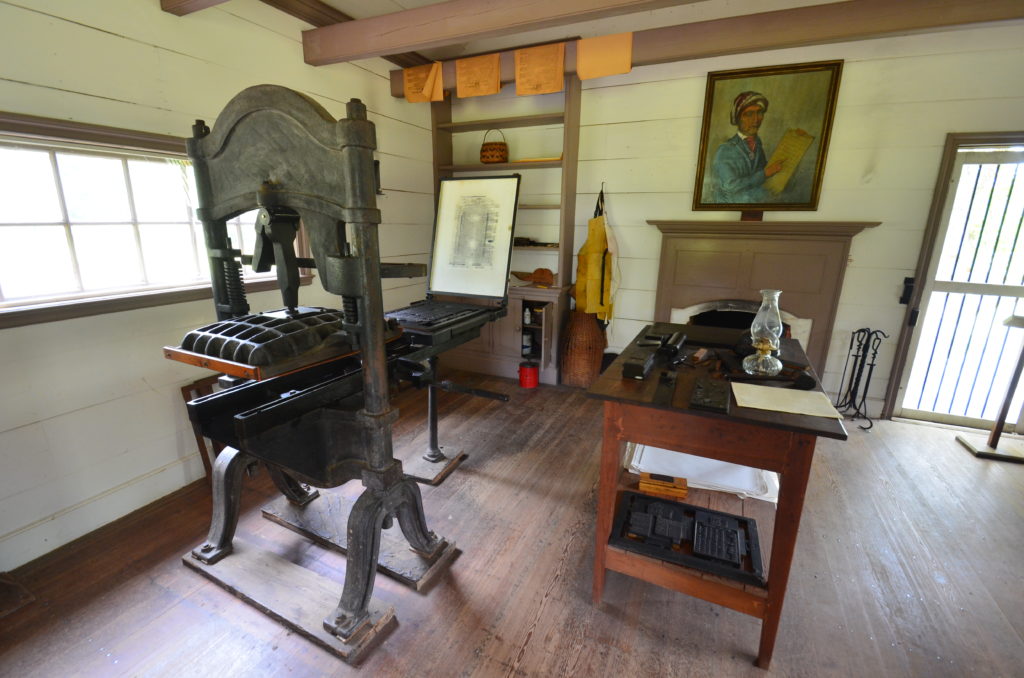
My lack of knowledge was apparent when we visited the New Echota State Historic Park. Until then, my perception of Native American Indians was from TV Westerns. In my mind, they were savage groups of people who viciously attacked settlers moving out West. They wore warpaint, little clothing and were completely uncivilized. That may have been the case at some point, but not by the 1800’s in Georgia.
During the 17-minute film at the visitor center, I learned many new things. First of all, the area was named New Echota after the original Echota in Tennessee. New Echota was developed around 1825 and served as the capital of the Cherokee Nation until the late 1830’s when the Trail of Tears forced the tribe to Oklahoma.
The Cherokee didn’t sleep in tepees, but rather had farms in this well laid out town complete with a tavern, print shop and silversmith.
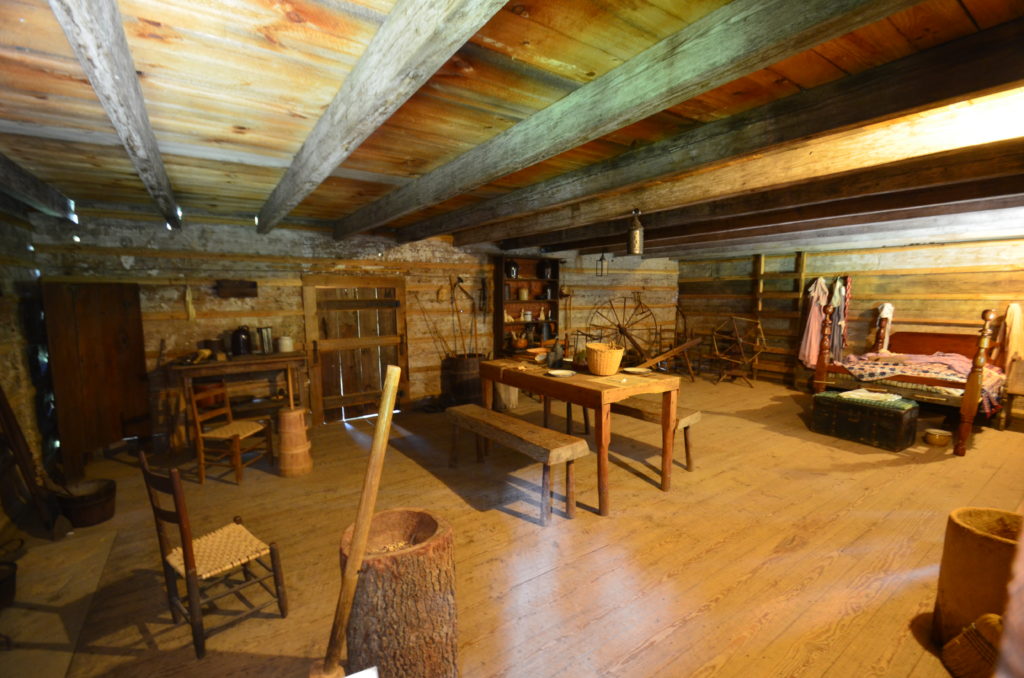
They also had three branches of government set up similar to the United States. Also on display were the recreated Council House and Supreme Court building.
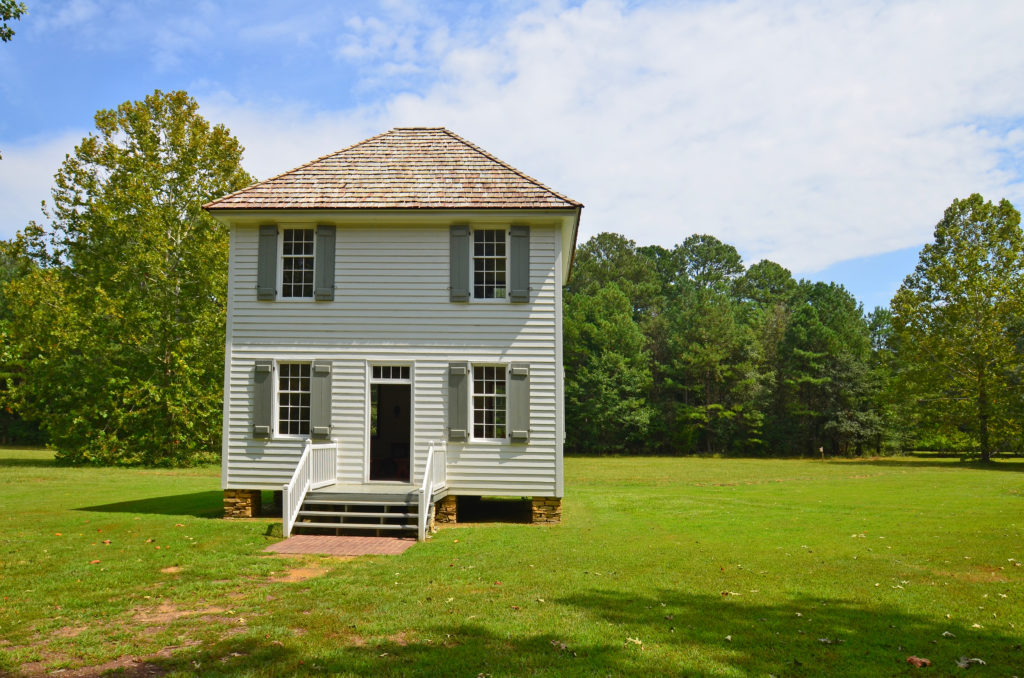
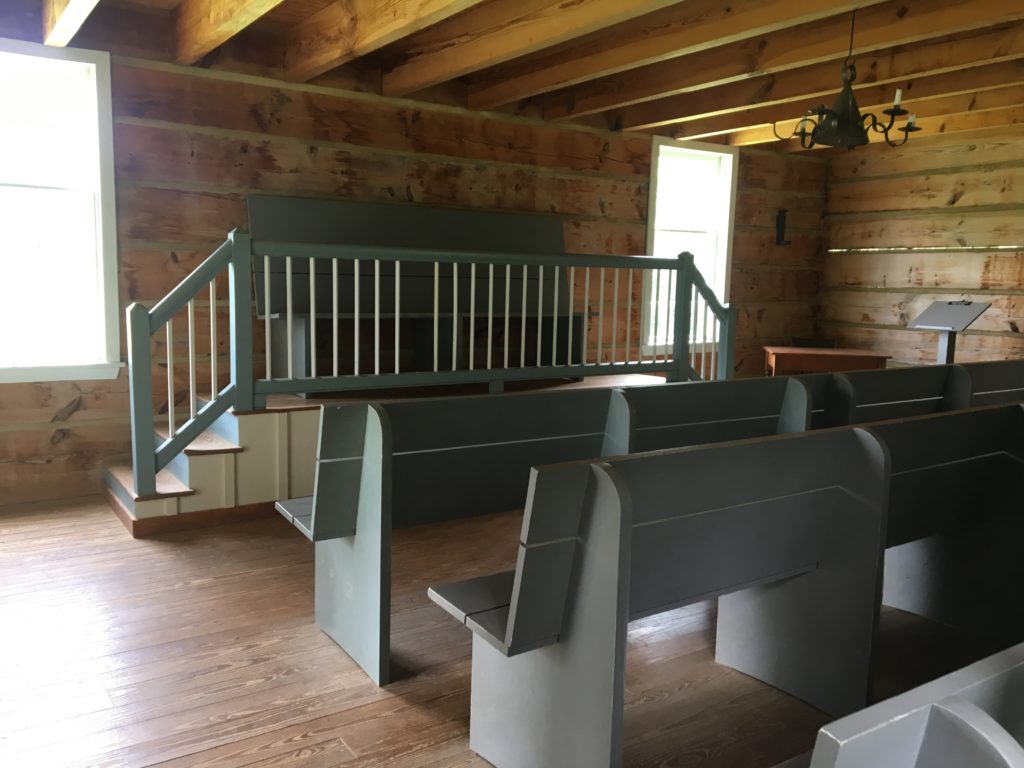
The Reverend Samuel Worcester resided here with his Cherokee wife and six children at the edge of the town. It is the only surviving building from the 1830’s.
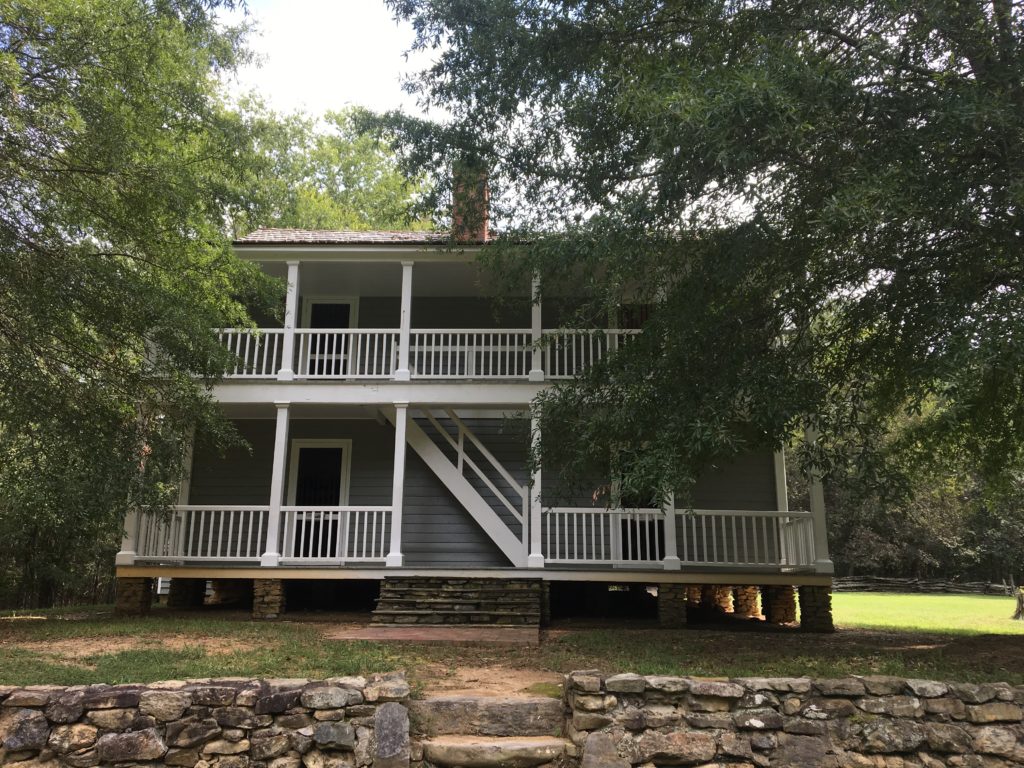
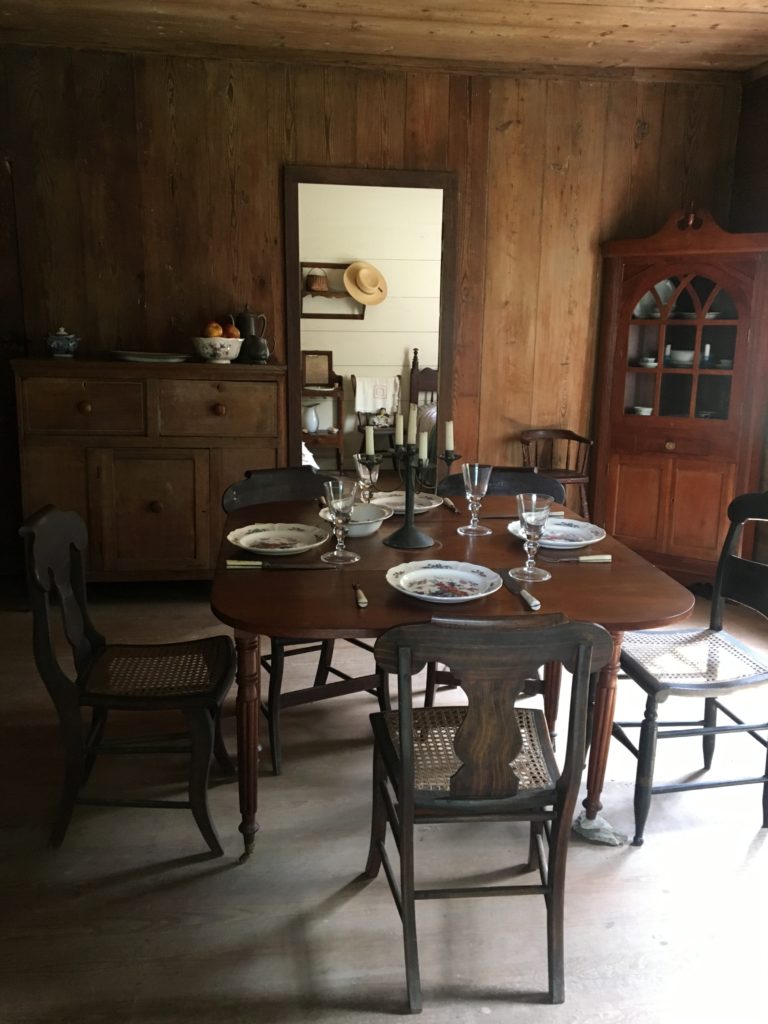
What happened to this peaceful town? Gold — or rather the discovery of gold at nearby Dahlonega caused efforts to remove the Native American Indians to quickly ramp up. Rev. Worcester sued the state of Georgia in 1831 and the case went to the Supreme Court. Although the highest court ruled in favor of the Cherokee Nation, President Andrew Jackson ignored it. Additionally, three prominent leaders – Major Ridge, John Ridge and Elias Boudinot (owner of the newspaper) signed the Treaty of New Echota in 1835 without the consensus of Chief John Ross and the majority of the Cherokee. Because of this betrayal, the three men were later assassinated. But the damage was done, in 1838 the Cherokee were forced to move into stockades and ultimately westward.
It is a sad chapter in U.S. history, but thankfully the park was begun in 1962. Today, a volunteer explained the workings of the printing press and how much work went into getting the weekly newspaper printed. Did you know they stored all the type (individual letters to form words) in cabinet drawers. The Capital letters were in the top drawer and the rest in lower drawers. Hence the term uppercase and lowercase letters!
After spending a few days putting the type together in columns, print shop workers would ink the press, lay the paper down and press with the large lever. Then, they had to hang up the paper to allow the ink to dry before printing the other side.
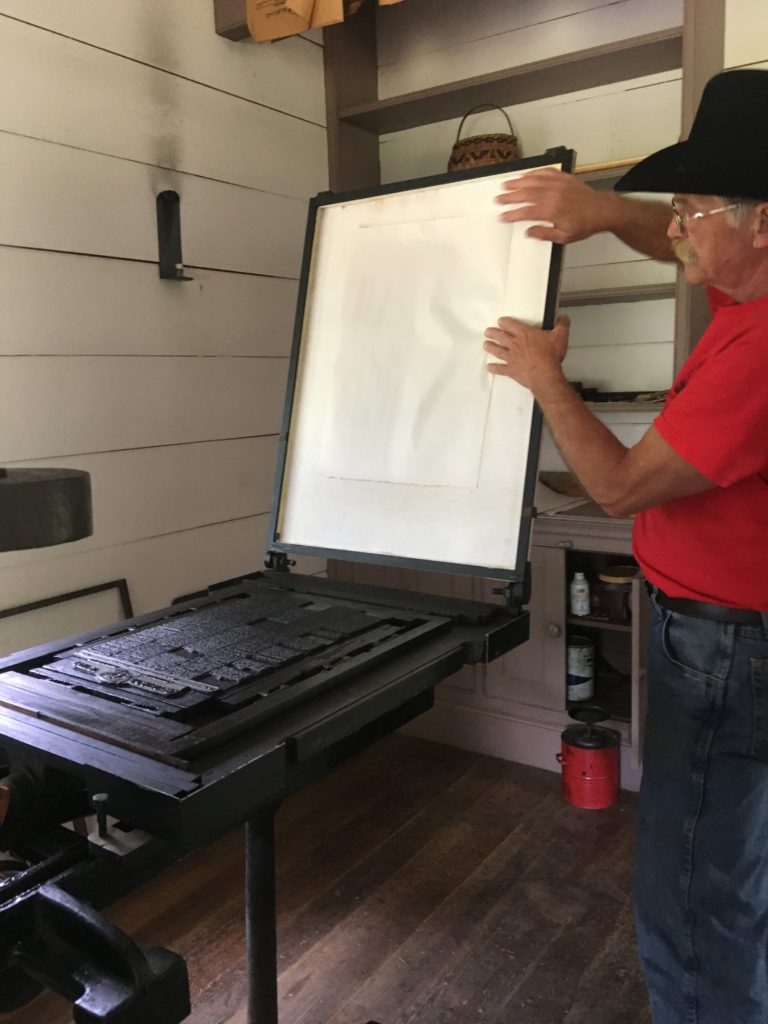
The entire site was a fascinating look at history. The site was opened in the 1962 after archaeologists excavated the area in the 1950’s. Today, it is open Wednesdays through Saturdays. For more information, click here.

